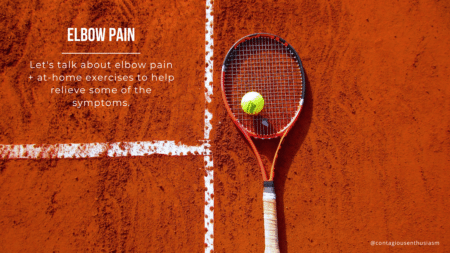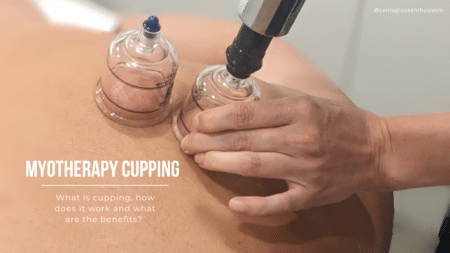Exercise Routine Revamp? Here’s how you can help your body!
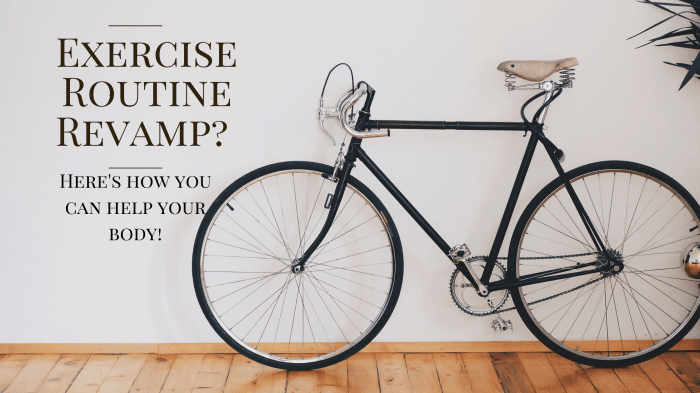
Staying at Home and Your Body – #3
Let’s move away from the desk for a second. With gyms closed around the state, most of us have had to revamp our entire exercise routine. Along with this increased load and change in routine come some common aches and pains, particularly in the lower body.
Below are some of the most common pains and pathologies that may present due to increased load and/or change in routine, as well as ways to help yourself at home!
- ITB Friction Syndrome
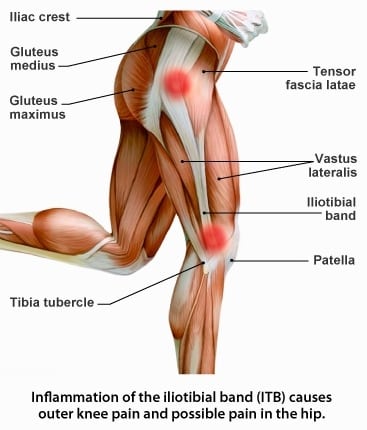
What is the ITB Friction Syndrome?
Iliotibial Band (ITB) Friction Syndrome is most common in endurance runners. The ITB is a thick band of fascia located on the side of your thigh. The ITB can become excessively tight with overuse, therefore causing friction and pain on the outer knee.
Pain is most common to present on the lateral knee, referring up the femur and occasionally into the hip. Symptoms are likely to worsen with activity.
What can you do at home to help?
- Gluteus Maximus Stretching
Glute Max Stretch: Lying on your back, cross your affected leg over the knee of your unaffected leg. Pull your unaffected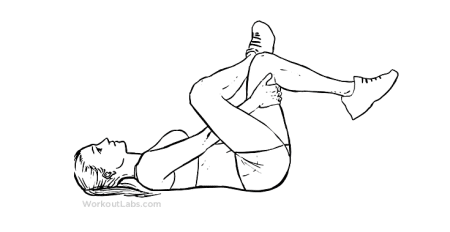 thigh up towards yourself. Hold for 30 seconds.
thigh up towards yourself. Hold for 30 seconds.
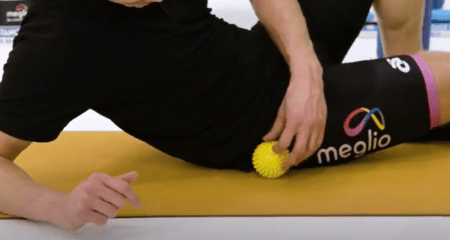
- TFL Spiky Ball
Grab your yoga mat and sit on the floor.
Find the pointy part at the front of your hip bone.
Place the spiky ball next to you, between the pointy part of your hip bone and the top of your thigh.
Roll onto your side, onto the spiky ball. Slowly rock back and forth.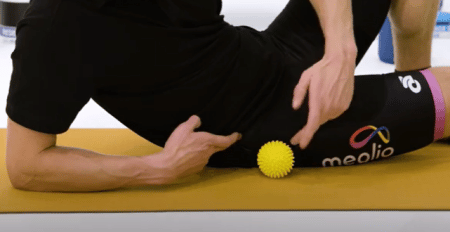
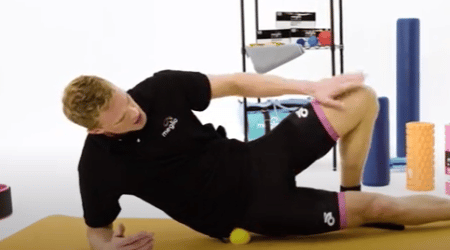
- ITB Foam Rolling
Lying on your side, place your elbow at a 90 degree angle under your shoulder.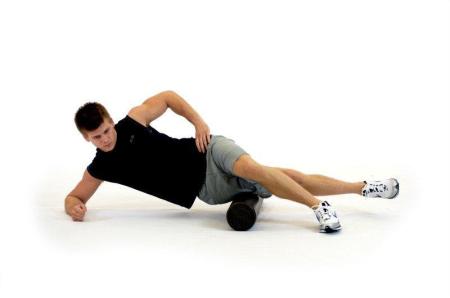
Place the foam roller under your leg, beginning at the top, just under the hip.
Cross the top leg over the bottom leg, and place it in front of your body, to stabilise and allow movement.
Apply moderate pressure, and slowly begin rolling down the side of your leg (this may cause some discomfort, however it should not be too painful.)
2. Medial Tibial Stress Syndrome (Shin Splints)
What is Medial Tibial Stress Syndrome?
Also known as shin splints, Medial Tibial Stress Syndrome (MTSS) is pain presenting in the front of the lower leg, on the inner side.
MTSS is most common in activities involving running and jumping, such as distance runners, sprinters, basketball, tennis players, or gymnasts, however dancers and other active people may still develop symptoms at some point.
Pain is mostly likely to occur in patients whom have had an increase in their training load, or a change to their regular exercise regime. This can include an increase in distance, duration and intensity. Other factors to consider include poor footwear, abnormalities in biomechanics (such as over pronation occurring in the feet, leg length discrepancy, excessive internal or external rotation of the hips, so on) or running on hard surfaces like concrete.
What can you do at home to help?
- Rest
While this might not be what you want to hear, rest from the aggravating exercise can significantly reduce your symptoms.
- Small changes to your exercise routine
If possible, avoid hills and uneven surfaces while running. Avoid training on hard surfaces.
When you decide to increase your training load, do so in small amounts at a time.
Before training, ensure you are adequately stretching with dynamic stretches (leg swings, pulsing, moving). After training, ensure you are adequately stretching with static stretches.
- Strengthening calf muscles
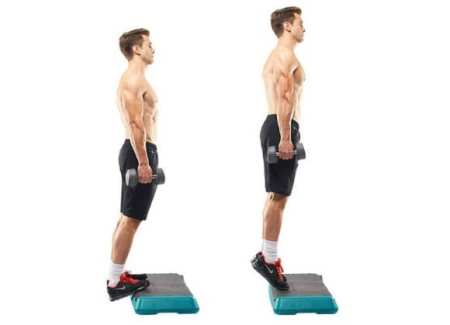
Calf raises
Equipment: 2 x 3kg Dumbbells
Standing tall with your core engaged; hold a dumbbell in each hand by your side.
Rise onto your tip toes and hold for 2 seconds at the top before lowering down to the floor. This is 1 rep.
Reps: 10
Sets: 2
NO EQUIPMENT
Find a step to stand on, you can use a handle or wall to support yourself.
Stand with your toes and end of your foot on the step, with your heal hanging off the back.
Slowly, let your heal drop down slightly.
Push up and onto your tip toes. Hold for 2 seconds at the top before lowering down to your starting position. This is 1 rep.
- Self-massage/treatment
If you have a massage oil, magnesium cream, or anti-inflammatory gel at home, massaging the area can help significantly reducing your pain.
Find your shin bone and massage your oil/cream/gel into the tissue either side with moderate pressure. You may also like to massage the calf as well.
3. Patellar Tendinopathy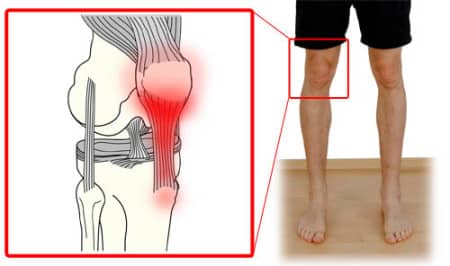
What is patellar tendinopathy?
Patellar tendinopathy is an overuse knee injury on the patella tendon, most common in activities involving running, jumping and kicking. It is also common in cyclists.
The onset of pain is gradual and usually associated with an increase of intensity or duration of training. Pain presents in the front of the knee and worsens with activity. Causes of patellar tendinopathy can include tightness in the quadriceps and hamstrings, repetitive overuse and poor lower body posture.
What can you do at home to help?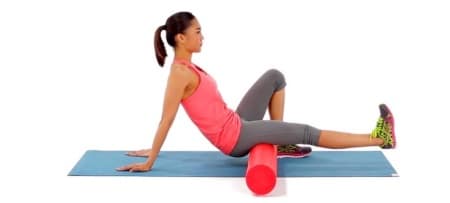
- Foam rolling Hamstrings
Sitting on the floor, bend one knee up and keep the other straight. Place the foam roller under the straight leg. Start at the top of your leg and roll down towards the knee. Stop when you get to the knee. Continue rolling up and down the back of the thigh for 1 minute.
- Spiky ball Quadriceps
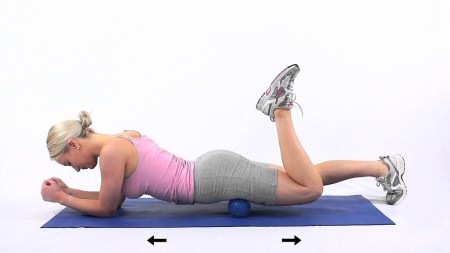
Lie on the floor facing down and prop yourself up with your elbows. Place the spiky ball under your thigh and slowly slow back and forth.
In general:
- Always remember to stretch before and after exercising – dynamic before, static after.
- For common muscle aches, apply a heat-pack to the area.
- Drink plenty of water before, during and after exercising.
To see more of the ‘Staying at Home and Your Body’ Series, click here
Telehealth is now available for existing patients at Contagious Enthusiasm. Book online or over the phone.
For more content, find us on instagram: @contagiousenthusiasm
Written by Ashlee Crisp (Myotherapist)




